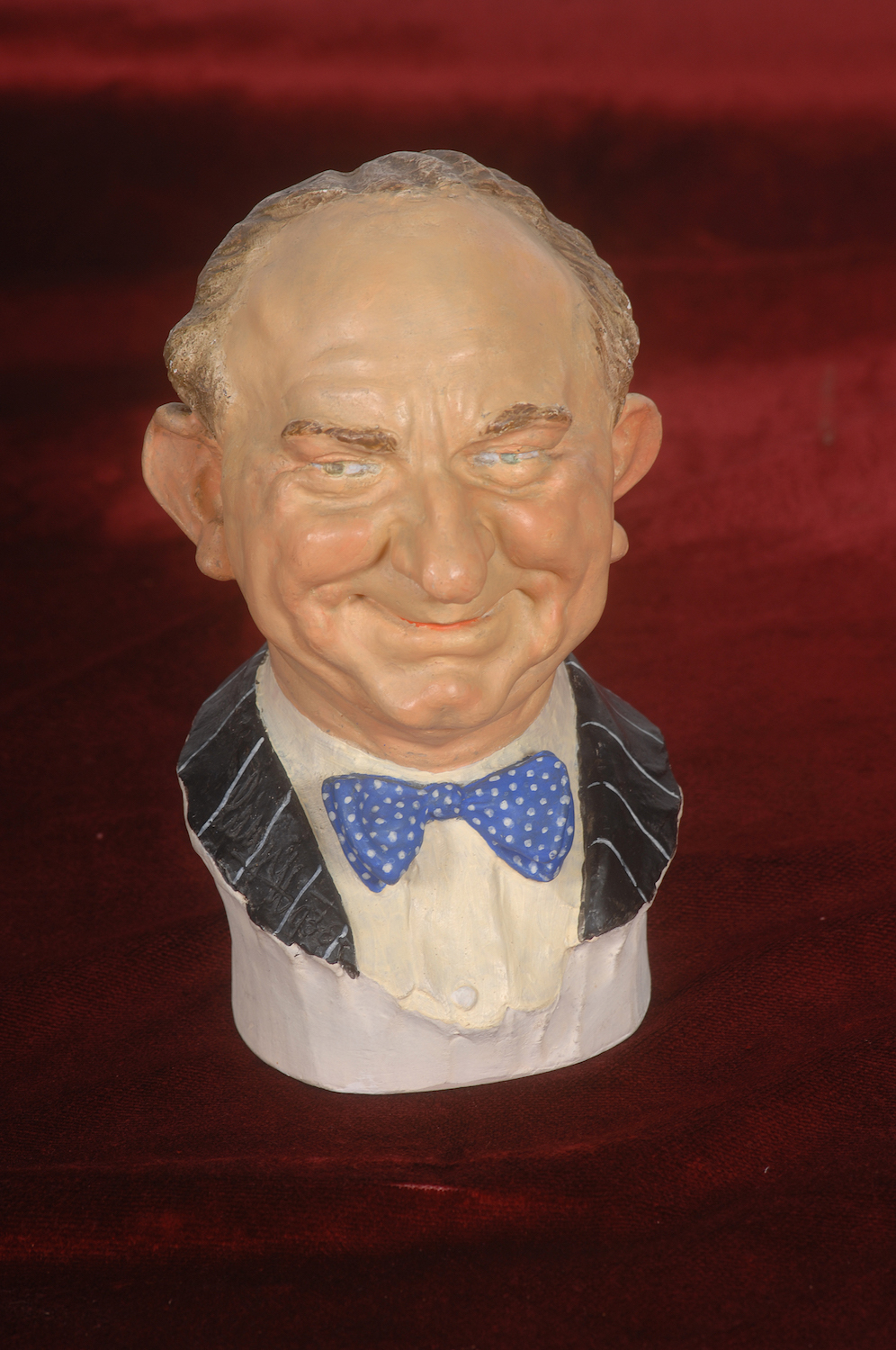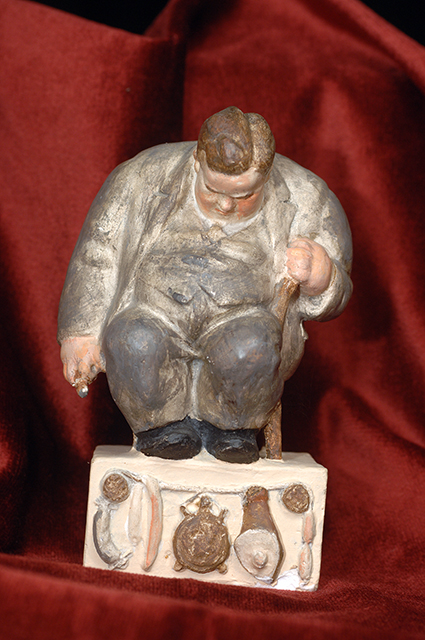
Lányi Dezső (1879–1951) szobrászművész karikatúraszobraival divatot teremtett. Nemcsak a modellek őrizték féltve az alkotásokat, a festett figurák a művész kiállításain is szerepeltek. Az Ernst Múzeumban 1918-ban megrendezett tárlat katalógusában Lázár Béla ezt írta:
„Lányi Rabelais torzító erejével megy az emberi formákhoz, melyeket, mint egyéb művei igazolják, teljes pozitivitásukban, gazdag konkrét erejükben fog fel. De egyszerre csak meglátja a formák mögötti életet, a fel-felbukkanó fintort, mely ritka pillanatokban ott lebeg a formákon, képzeletében megragadja azt, s embere le van leplezve, megtudjuk élete titkát, tehetetlenül, szinte élettelen merevségben kénytelen megállani előttünk.”
Caricature statuettes by Dezső Lányi
Sculptor Dezső Lányi (1879–1951) started a fashion with his caricature statues. Not only his models preserved his works with great care, but the painted figures were also featured on the exhibitions of the artist. Lázár Béla wrote in the catalogue of the exhibition organized in 1918 at the Ernst Museum:
‘Lányi approaches human forms with a Rabelaisian distortion, which, as his other works testify, he grasps in their full positivity, in their rich power of concreteness. But out of a sudden he recognizes the life behind these forms, the a flashing grimace, which in these rare moments hovers over these forms, grasping it with his imagination, and the subject is suddenly unmasked, he lets out his life secret, the person being forced to stand in front of us helplessly, in an almost lifeless rigor.’


